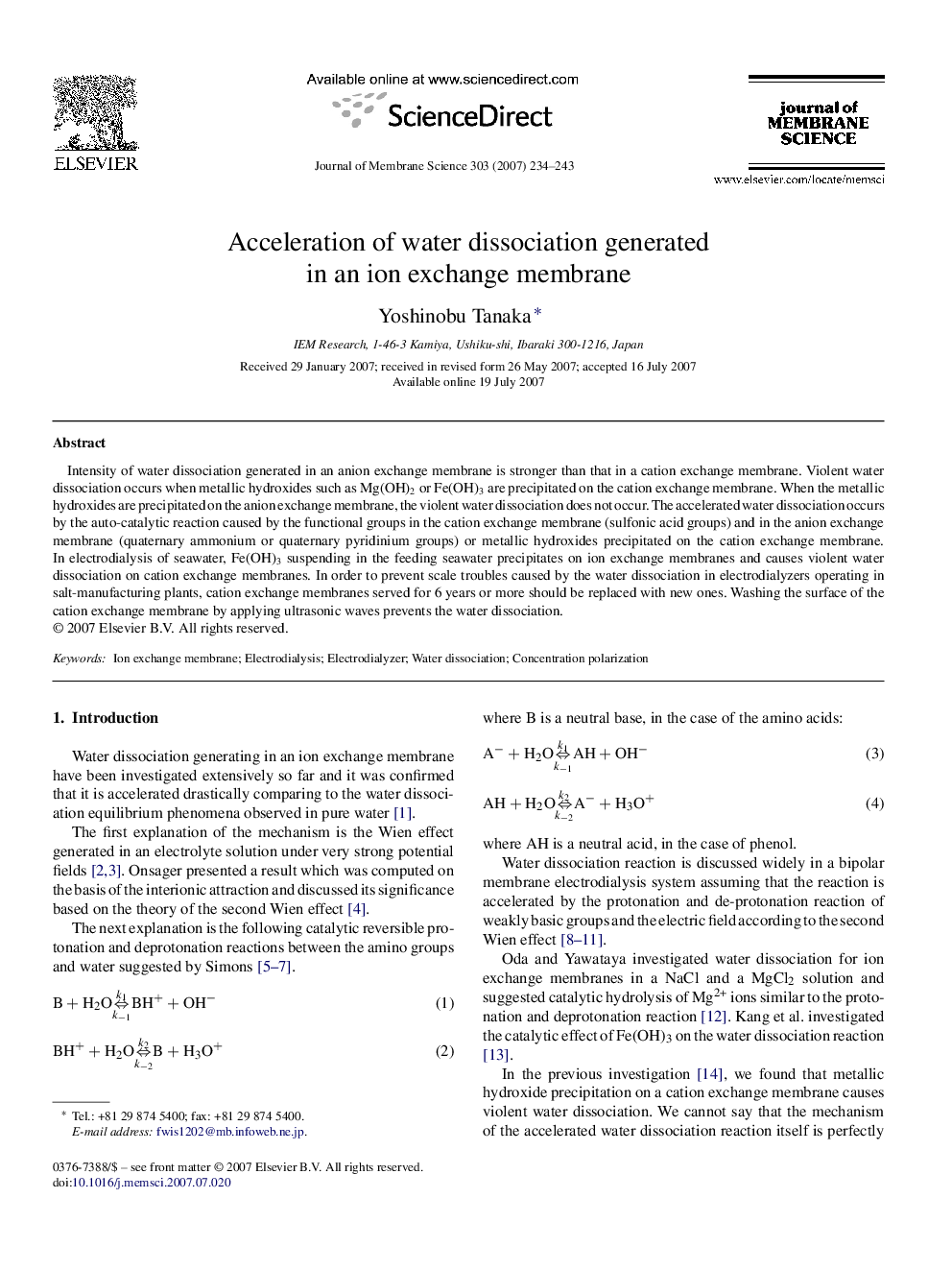| Article ID | Journal | Published Year | Pages | File Type |
|---|---|---|---|---|
| 638352 | Journal of Membrane Science | 2007 | 10 Pages |
Intensity of water dissociation generated in an anion exchange membrane is stronger than that in a cation exchange membrane. Violent water dissociation occurs when metallic hydroxides such as Mg(OH)2 or Fe(OH)3 are precipitated on the cation exchange membrane. When the metallic hydroxides are precipitated on the anion exchange membrane, the violent water dissociation does not occur. The accelerated water dissociation occurs by the auto-catalytic reaction caused by the functional groups in the cation exchange membrane (sulfonic acid groups) and in the anion exchange membrane (quaternary ammonium or quaternary pyridinium groups) or metallic hydroxides precipitated on the cation exchange membrane. In electrodialysis of seawater, Fe(OH)3 suspending in the feeding seawater precipitates on ion exchange membranes and causes violent water dissociation on cation exchange membranes. In order to prevent scale troubles caused by the water dissociation in electrodialyzers operating in salt-manufacturing plants, cation exchange membranes served for 6 years or more should be replaced with new ones. Washing the surface of the cation exchange membrane by applying ultrasonic waves prevents the water dissociation.
